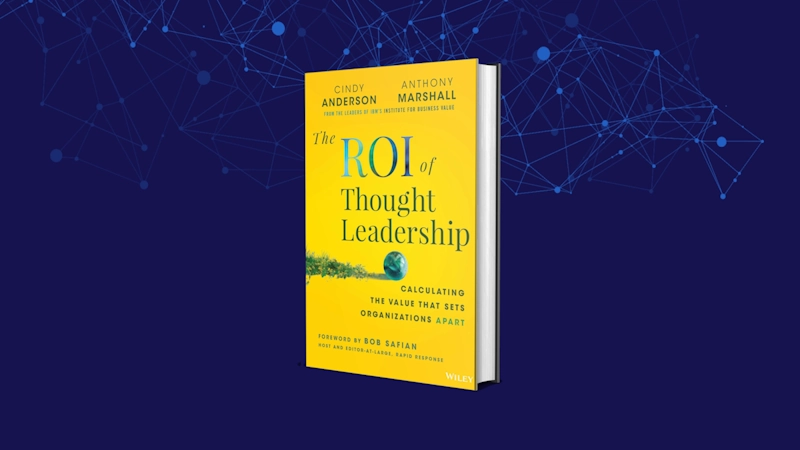Does GEO Save or Wreck PR?

The New Battleground for Visibility
Public relations has always been about visibility. For decades, PR professionals measured their craft by the ability to secure coverage in trusted outlets, tell brand stories with credibility, and influence conversations in ways that advertising could not. Then the industry shifted—first with SEO, later with pay-for-play, and most recently with the rise of generative AI. Enter Generative Engine Optimization (GEO), the discipline of shaping how AI-driven answer engines like ChatGPT, Gemini, or Perplexity surface brand mentions.
Advocates say GEO is breathing new life into PR, putting earned media back at the center. Critics argue it’s another passing fad, one that risks starving the very media ecosystem PR depends on. The truth, as with most disruptions, lies somewhere in between.
In this piece I examine the arguments on both sides: whether GEO represents salvation for a craft that is at risk of losing its footing; or whether AI inadvertently undermines the foundations of earned media.
GEO Saves PR by Elevating Earned Media
Proponents believe GEO has restored value to traditional PR. Why? Because AI models reward credibility, trust, and third-party validation the hallmarks of earned media.
When people ask AI engines for advice, on financial trends, software vendors, or travel destinations the answers draw heavily from authoritative news outlets. These models pull less from paid placements or thin marketing content, and more from trusted press coverage. That means companies with strong earned media profiles are disproportionately represented in generative answers.
This has real implications:
- Earned media visibility now directly influences AI recommendations, creating a feedback loop where credible coverage translates into higher exposure in answer engines.
- Traditional PR skills matter again. Reporters still want good stories, and GEO depends on them. Securing interviews, developing quotable insights, and placing content in respected outlets are exactly what PR professionals excel at.
- Budgets are shifting. Brands that once funneled resources into sponsored posts or influencer campaigns are reconsidering PR as a primary driver of AI visibility. For many practitioners, it feels like the craft has regained its central place in the marketing mix.
As one veteran observed, GEO “is basically just PR, we need to own it.” In that framing, GEO doesn’t replace PR; it validates it.
GEO Risks Wrecking PR by Undermining the Media Ecosystem
Critics, however, see GEO as a parasitic trend that could destabilize the very outlets PR relies on. Their concern isn’t about visibility today, but the future sustainability of journalism and media itself.
Generative engines aggregate and summarize content, reducing direct click-through to original publishers. Less traffic means fewer ad impressions and less subscription growth for news outlets. If newsrooms see diminished revenue, they may shrink even further, leading to fewer journalists, less investigative depth, and fewer opportunities for brands to secure meaningful coverage.
In this sense, GEO may “save” PR in the short term—by amplifying earned mentions—but wreck it in the long term by draining the media environment that produces those mentions. As one commenter put it, GEO is “a digital parasite, feeding off the websites it starves of traffic.”
The second risk lies in perception. GEO is already being marketed as the next shiny solution, much like social media, SEO, digital PR, or influencer blitzes once were. Many PR pros worry that GEO will become another checklist tactic, stripped of craft and sold as a quick fix. That risks diluting PR’s strategic value and tethering it to a trend that may not endure.
Evidence Supporting Both Sides
Looking at how GEO interacts with PR, a few clear dynamics emerge:
- AI prioritizes authoritative sources. Studies and anecdotal testing show that ChatGPT, Perplexity, and Google’s AI Overviews cite Forbes, TechCrunch, and other high-trust outlets more frequently than paid placements. This confirms earned media’s rising importance in an AI-first landscape.
- Mentions matter as much as links. Traditional SEO relied heavily on backlinks. GEO, however, seems to treat mentions—brand names, expert quotes, cited research—as digital trust signals. That makes PR coverage, even without links, far more influential.
- Journalism’s business model remains under pressure. While GEO may boost the visibility of certain outlets, it doesn’t necessarily drive readers to them. If answer engines become the primary interface for information, news organizations may see declining traffic and revenue, weakening the supply of quality journalism.
- Pay-for-play hasn’t disappeared. Despite GEO’s emphasis on earned media, many media outlets still lean on subscription models or sponsored content. GEO may shift priorities, but it doesn’t resolve the underlying economic pressures facing journalism.
- PR must adapt its tactics. Pitching generic press releases has never worked. AI models favor conversational, Q&A-style content and clear, quotable insights. PR pros must adjust how they frame stories—crafting narratives that not only resonate with human reporters but also train machine learning systems.
- The rise of “Super Journalists” may change the game. This term was coined by Jim VandeHei at Axios, who describes the rise of super journalists as those with “true domain expertise, top-notch sourcing and historical depth to tell people things they don't know. These journalists have a deep passion for a topic — be it politics, AI, or a specific city — and deep sourcing, knowledge, and credibility. They establish an authentic human connection, based on trust built over years.” Additionally, Super Journalists are building devoted readership communities and monetizing through Substack, Medium and podcasts. The individuals may yet become the new driving force of a sustainable media ecosystem that thrives despite the impact of AI.
Reality Lies Somewhere In Between
So, does GEO save or wreck PR? The answer is both—and neither.
On one hand, GEO re-centers PR’s traditional strengths: storytelling, credibility, and media relationships. For practitioners who felt sidelined in the pay-for-play era, GEO is a much-needed resurgence. It rewards the hard work of cultivating earned media and restores its direct impact on visibility.
On the other hand, GEO carries risks. It may inadvertently weaken the media outlets it depends on, creating a future where there are fewer credible sources for AI to cite. It may also tempt marketers to treat it as a silver bullet, reducing PR once again to a tactical checkbox.
The most realistic conclusion is that GEO represents an evolution, not a revolution. PR will neither be saved outright nor wrecked completely—it will be reshaped. The profession must embrace GEO as part of its toolkit while continuing to advocate for the sustainability of journalism itself.
Ultimately, the future of PR in the age of GEO will hinge on balance: leveraging generative visibility without undermining the sources of credibility that make PR valuable in the first place.
As an agency that focuses on B2B Technology, the team at Actual Agency is ready to help you deliver media coverage, thought leadership and market-leading commentary about the impact of technology on business transformation. If you are looking for a B2B Tech PR agency that delivers results, contact the Actual Agency team today!




